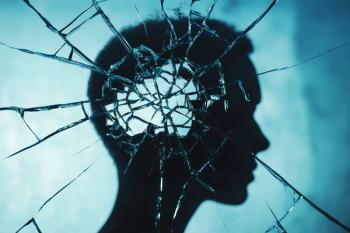
- Vol 42, Issue 6
Tardive Dyskinesia: Treat Functional Impairment, Not the AIMS Score
Key Takeaways
- TD is often underreported and misdiagnosed, despite being a well-known adverse effect of antipsychotic medications, leading to inadequate treatment.
- VMAT2 inhibitors, approved in 2017, represent a significant advancement in the treatment of TD, offering evidence-based options for managing symptoms.
Learn more about how to best assess and treat tardive dyskinesia.
According to a new study published in BMC Psychiatry, only 4.9% of patients who were prescribed antipsychotics for their psychiatric illness and had evidence of
Yet, TD is a well-established adverse effect of antipsychotic medications and is often irreversible. The well-described hyperkinetic and often dramatic involuntary movements can involve any of the estimated 650 skeletal muscles of the human body, including the diaphragm and pharynx. As well as causing noticeable and often dramatic involuntary movements, these movements often cause significant functional impairment, which varies significantly from patient to patient. Sometimes the patient is unaware of these movements, and it is not uncommon for a patient’s friend, family member, coworker, or even a stranger to bring these movements to the patient’s attention.
TD was first described in the medical literature in 1957,2,3 just a few years after the very first antipsychotic medication, chlorpromazine, was introduced in the United States. Despite tireless medical research, it wasn’t until 2017 that 2 vesicular monoamine transporter 2 (VMAT2) inhibitors—deutetrabenazine4 and valbenazine5—were approved by the US Food and Drug Administration as the first evidence-based effective treatments. This 60-year gap likely contributed to the progressive decrease in screening, documenting, and discussing the cause and course of TD with patients.
The presumed pathophysiological mechanism of TD by antipsychotics is the antagonism of dopamine-2 receptors (D2Rs) in the dorsal striatum of the human brain, whereas antagonism of these same receptors in the ventral striatum is believed to improve psychotic symptoms, hence the term antipsychotic. Nonpsychiatric medications such as metoclopramide (Reglan; used for the treatment of gastroesophageal reflux disease, gastroparesis, and as an antiemetic) and prochlorperazine (Compazine; used as an antiemetic) share this property of D2R antagonism and exhibit similar risks for TD.
The VMAT2 Inhibitors
It was a big deal when VMAT2 inhibitors were approved for the treatment of TD. The American Psychiatric Association updated their practice guidelines for the treatment of
There has been much to learn about TD and its subtleties since its approval. To complicate matters, the field of medicine, the FDA lumped at least 24 different movement disorders into the category of extrapyramidal symptoms (EPS) with no differentiation regarding etiology and diverse treatments. Even today, the term EPS is ubiquitously used to define the presence of any medication-induced movement disorder. (I suggested the term EPS is antiquated and needs to be retired in a
Curiously, anticholinergic medications, including benztropine, diphenhydramine, and trihexyphenidyl, are commonly used to treat all antipsychotic-induced movement disorders despite the fact that they make TD worse and have no benefit for akathisia. Similarly, the VMAT2 inhibitors can bring out a vulnerability to Parkinson disease (PD), or if PD is already present, they can make it worse.
The AIMS Exam
Establishing a pre-antipsychotic motor system baseline, ongoing screening for TD, and monitoring TD once it appears are essential components of good evidence-based practice.
The Abnormal Involuntary Movement Scale (AIMS) exam is currently the gold standard monitoring scale that is used to establish a baseline before initiating an antipsychotic medication, as well as to detect the onset of any TD and track its worsening or improvement. Initially developed by the National Institute of Mental Health for use in research, clinicians rapidly adopted the AIMS, and it is the most utilized scale for evaluating and managing TD in the US as well as in clinical trials and research.8
The AIMS includes 12 items, but only the first 7 questions rate movement severity in various muscle groups. Each of these groups is rated from 0 (no movements) to 4 (severe movements), giving a total numeric range from 0 (no movements) to 28 (severe movements in all 7 muscle areas). The collective rating of these 7 items is the AIMS dyskinesia total score (AIMS DTS).
Importantly, an individual may have an AIMS DTS of 5 yet meet the standard for treatment with a VMAT2 inhibitor, whereas another individual’s score may be 10, yet no treatment is indicated. How can this be? Let’s review a few case examples.
Case 1
“Ms Robbins” is 49 years old and works as a bank teller. She has been on an antipsychotic medication to treat her
Ms Robbins presents to your office for a follow-up visit. She had a recent encounter with her supervisor after several bank customers reported that they observed frequent eye blinking and some lip movements during their bank transactions with her. Later at home, she asked her husband and adult children whether they noticed any movements. They confirmed these types of movements, noting they seemed to be increasing over the past several months.
After performing an AIMS exam, Ms Robbins scores a 3 (moderate) on the item for muscles of facial expression due to notable eye blinking, and a 2 (mild) on the item for lip movements, giving her an AIMS DTS of 5.
Upon further discussion, Ms Robbins reports increased anxiety and sadness about these movements, and she is worried about her job. Additionally, she reports she is attending fewer social events out of embarrassment. She becomes tearful and is visibly distressed during the conversation. She does not want to change any of her current medications and asks what treatment options are available.
Case 2
“Mr Jones” is 45 years old and works the night shift as a security guard at a large office complex. He has been on an antipsychotic medication to treat schizoaffective disorder, bipolar type, for 12 years. He had multiple hospitalizations for psychotic and manic decompensations in his 20s, but he has done well over the past 10 years, which you attribute both to his medication adherence and minimal psychosocial stressors. Mr Jones is in a long-term relationship and enjoys the quietude and financial stability of his job.
You perform his annual AIMS exam, and Mr Jones scores a 2 (mild) on tongue, lips, jaw, fingers, and feet, resulting in an AIMS DTS of 10.
Upon further discussion, Mr Jones denies distress from these movements. Although both he and his partner have noticed some of these movements, he prefers to leave treatment as is and simply increase monitoring with more frequent AIMS exams.
Impact of Movements
These 2 cases highlight the importance of balancing the relative objective AIMS DTS score with the individual’s experience and how movements impact their day-to-day life. Looking at AIMS DTS, Mr Jones’ score was twice as high as Ms Robbins’ score on the objective scale, suggesting he should receive treatment with a VMAT2. However, all 5 of Mr Jones’ scores were 2s, putting them all in the mild range. In addition, he expressed no distress or concerns about the movements. After reviewing the possible impact of the current movements on various aspects of his daily functioning, he preferred to simply increase monitoring.
On the other hand, Ms Robbins had a much lower score. Yet, she expressed that the moderate eye blinking and mild lip movements were impacting her job, emotions, self-esteem, and social functioning, causing significant distress, so she readily agreed to initiate VMAT2 inhibitor treatment to minimize these movements to the greatest degree possible.
Domains of Impairment
These past 8 years have shown us that TD is a much larger bucket of symptoms than we originally thought. Although patients with severe TD are readily recognizable, our challenge is identifying patients with moderate to mild impairment. This requires the vigilance of a systematic AIMS exam. The clinician should ensure the patient is relaxed and should be aware of various activating maneuvers, such as tapping each finger to the thumb of one hand while looking for movements everywhere else.
Once movements are identified, the real detective work begins. Because each person is unique, movements that bother one person may be hardly noticeable in another, as in the cases of Ms Robbins and Mr Jones. Thus, as clinicians, we should ask questions to uncover any degree of functional impairment. Spouses, partners, family, friends, and care providers can be imperative to capturing the full range of impairments. Importantly, some patients with anosognosia will innocently deny any movements despite dramatic TD with significant impairments.
In 2022, a panel of TD experts developed a standardized tool that could be utilized easily in a clinical setting to assess TD’s impact on functioning in various domains. The resulting Impact-TD scale measures the degree of functional impact on 4 categories: social, psychological/psychiatric, physical, vocational/educational/recreational.9 Through my years of assessing and treating TD, I developed an acronym—MEASO—that has been helpful in reminding me to ask the many questions to capture functional impairment resulting from TD, regardless of the AIMS score or my impression of the likely consequences of the dyskinetic movements (
Concluding Thoughts
Antipsychotic medications have proven to be worthy tools in addressing psychiatric illness, yet they put our patients at risk for developing TD. In retrospect, it is not surprising that psychiatry has overlooked, or even become complacent, in completing motor assessments, functional assessments, informed consent discussions, psychoeducation, and comprehensive treatment of TD. The first task is to master the differential diagnoses of any movement-related symptom, then assess functional impact. When facing uncertainty, consider consulting with a psychiatric colleague or a neurologist to aid in the differential diagnosis and treatment. Importantly, once the diagnosis of TD has been made, perform a thorough assessment of the resulting functional impairment and work with your patient to find the outcomes that are most appropriate for them.
Dr Miller is Medical Director, Brain Health, Exeter, New Hampshire; Editor in Chief, Psychiatric Times; Staff Psychiatrist, Seacoast Mental Health Center, Exeter; Consulting Psychiatrist, Insight Meditation Society, Barre, Massachusetts.
References
1. Griffiths K, Won Y, Lee Z, et al.
2. Schonecker M.
3. Correll CU, Kane JM, Citrome LL.
4. Austedo/AustedoXR. Prescribing information. Teva Pharmaceuticals; 2025.
5. Ingrezza. Prescribing information. Neurocrine Biosciences Inc; 2025.
6. Keepers GA, Fochtmann LJ, Anzia JM, et al.
7. Miller JJ.
8. Guy W. ECDEU Assessment Manual for Psychopharmacology, revised edition. US Department of Health, Education, and Welfare; 1976:534-537.
9. Jackson R, Brams MN, Carlozzi NE, et al.
Articles in this issue
6 months ago
If You Were a Cookie, What Kind Would You Be?6 months ago
Celebrating 40 Years, A Midway Check-InNewsletter
Receive trusted psychiatric news, expert analysis, and clinical insights — subscribe today to support your practice and your patients.













